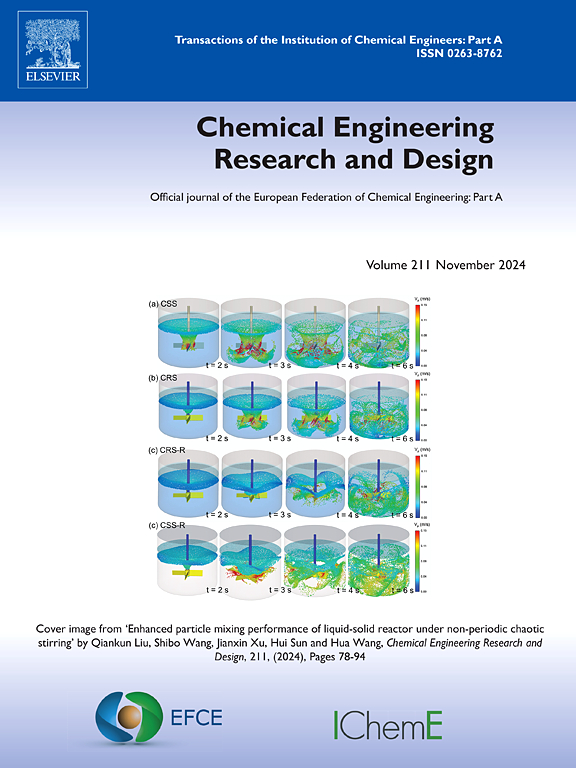Techno-economic and environmental analysis of decarbonization pathways for cement plants in Uzbekistan
IF 3.7
3区 工程技术
Q2 ENGINEERING, CHEMICAL
引用次数: 0
Abstract
The cement industry is a major contributor to global carbon emissions and is characterized by high energy waste, necessitating urgent mitigation efforts. This study explores decarbonization pathways, including energy efficiency, clinker substitution, alternative fuels, and carbon capture, storage, and utilization technologies, for a 1 Mt/year cement plant in Uzbekistan. Waste heat recovery and CO2 capture technologies are identified as the most effective methods for this plant because of their high efficiency and sustainability potential. By using modeling tools such as Aspen Plus and Aspen Custom Modeler, various scenarios, including the cement plant baseline, amine-based CO2 absorption, membrane CO2 separation, and WHR units, are investigated to assess their techno-economic and environmental impacts. The study establishes design parameters for each unit and calculates both capital and operational costs. Compared with conventional amine absorption, the membrane separation process reduces the clinker cost, levelized cost of clinker, CO2 avoided cost, and CO2 capture cost by 31 %, 34.3 %, 72 %, and 70 %, respectively. The implementation of a waste heat recovery system with amine absorption and membrane separation further reduces annual indirect CO2 emissions by 17 % and 35 %, respectively, thereby lowering operating costs. Membrane separation systems prove to be more economical in terms of both capital and operational expenses, particularly when integrated with heat recovery systems, effectively offsetting the higher costs associated with amine-based systems.
乌兹别克斯坦水泥厂脱碳途径的技术经济和环境分析
水泥行业是全球碳排放的主要贡献者,其特点是能源浪费严重,因此迫切需要采取减排措施。本研究探讨了乌兹别克斯坦一家年产 100 万吨水泥厂的脱碳途径,包括能源效率、熟料替代、替代燃料以及碳捕获、储存和利用技术。由于余热回收和二氧化碳捕集技术具有高效率和可持续发展潜力,因此被认为是该厂最有效的方法。通过使用 Aspen Plus 和 Aspen Custom Modeler 等建模工具,研究了各种方案,包括水泥厂基线、胺基二氧化碳吸收、膜二氧化碳分离和余热回收装置,以评估其技术经济和环境影响。研究确定了每种装置的设计参数,并计算了资本和运营成本。与传统的胺吸收法相比,膜分离法的熟料成本、熟料平准化成本、二氧化碳避免成本和二氧化碳捕集成本分别降低了 31%、34.3%、72% 和 70%。采用胺吸收和膜分离的余热回收系统可进一步将每年的二氧化碳间接排放量分别减少 17 % 和 35 %,从而降低运营成本。事实证明,膜分离系统在资本和运营费用方面都更为经济,特别是在与热回收系统集成时,可有效抵消与胺系统相关的较高成本。
本文章由计算机程序翻译,如有差异,请以英文原文为准。
求助全文
约1分钟内获得全文
求助全文
来源期刊

Chemical Engineering Research & Design
工程技术-工程:化工
CiteScore
6.10
自引率
7.70%
发文量
623
审稿时长
42 days
期刊介绍:
ChERD aims to be the principal international journal for publication of high quality, original papers in chemical engineering.
Papers showing how research results can be used in chemical engineering design, and accounts of experimental or theoretical research work bringing new perspectives to established principles, highlighting unsolved problems or indicating directions for future research, are particularly welcome. Contributions that deal with new developments in plant or processes and that can be given quantitative expression are encouraged. The journal is especially interested in papers that extend the boundaries of traditional chemical engineering.
 求助内容:
求助内容: 应助结果提醒方式:
应助结果提醒方式:


